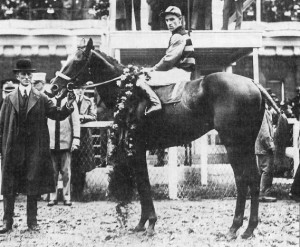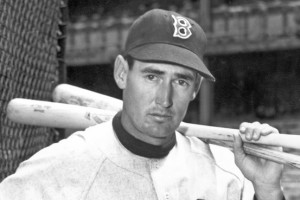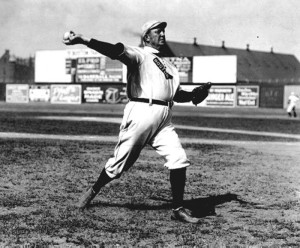Posted on
August 07, 2014 by
Martin Banks
For NASCAR fans, summertime means it’s time to load up some camping gear and head to the Poconos. The home of a pair of NASCAR Sprint Cup Series races held in June and August—the Pocono 400 and the GoBowling.com 400 respectively—the Pocono Raceway is one the most storied tracks in NASCAR history. Also home to the Pocono Indycar 500 and used by Sports Car Club of America along with motorcycle clubs and driving schools, the track gets a lot of use throughout the year.

The track is famous for its shape. Often described as a tri-oval, the track is actually closer to a triangle than an oval. It is unique in that its three turns are all different and modeled after turns from other tracks. Turn One has 14 degree banking and was based on the turns at the old Trenton Speedway. Turn Two, which has 9 degree banking and is also known as “The Tunnel Turn,” is similar to the Indianapolis Motor Speedway, while the 6 degree banking of turn 3 is based on The Milwaukee Mile.
But though NASCAR wouldn’t be the same without it today, there was a time when the Pocono Raceway nearly closed down for good. The raceway held its first race in 1968 on the three-quarter mile track. Three years later, the first 500 mile Indy race came to the Poconos on the two and a half mile rack and the first 500 mile NASCAR race at Pocono Raceway was held in 1974. But just as Pocono Raceway was getting its NASCAR start, the owners of the track, the Mattioli family were having some financial problems. Read the rest of this entry →
Tags: NASCARPoconosracingsports history
Category
NASCAR, Scott Huntington
Posted on
July 18, 2014 by
Martin Banks
Ricky Carmichael has taken a nontraditional path to the NASCAR circuit; he got there by absolutely dominating the motocross world. Born in 1979 in Clearwater, Florida, he first began racing motocross at a very young age. His parents were either very supportive of him or very nearly criminally negligent of him because he began racing at the incredible age of 5.

For the next ten years, he owned the American amateur races; as he went on to win an astonishing 67 titles. That’s nearly seven titles per year from age 5-15. Then in 1996 he decided to stop beating up on all the poor amateur racers and made the jump to pro racing. You know how sometimes there’s a bit of a learning curve when an athlete turns pro? You always hear people talking about college quarterbacks being stunned their rookie years by the speed of the NFL and so on. Well, there was no such harsh transition for Ricky Carmichael. In 1996 he won the AMA Motocross Rookie of the Year Award racing for the Kawasaki team.
Read the rest of this entry →
Tags: MotocrossmotorcyclesRick Carmichaelsports history
Category
Motocross, Scott Huntington, Sports History
Posted on
July 16, 2014 by
Martin Banks

Performance enhancing drugs are a major problem in Major League Baseball, largely because of the league’s lack of testing until recent years. Following the 1994 player’s strike that led to the cancellation of the World Series, baseball’s popularity in the United States dwindled.
The only thing that brought the fans back was the 1998 home run chase between Mark McGwire and Sammy Sosa, which ended with both players breaking Roger Maris’ single season record. It was later revealed that both players were taking PEDs during this season, but MLB did not have any testing procedures in place. In recent years, baseball has taken some steps towards cleaning up the sport, which has included suspensions of some high profile players.
First Suspensions
After MLB introduced its new drug policy in January of 2004, it was only a matter of time before some players were suspended. The first suspension was handed out on April 3, 2005 when Tampa Bay Devil Rays outfielder Alex Sanchez was given a 10-day ban. A total of 12 players were suspended in 2005, including all-stars Rafael Palmeiro, Ryan Franklin, and Matt Lawton. In 2005, the league and the player’s association agreed to make the penalties harsher for first time offenders, since each of these players was only suspended for 10 days. Read the rest of this entry →
Tags: BaseballPEDs
Category
Baseball, Scott Huntington, Sports History
Posted on
July 11, 2014 by
Martin Banks
With the defeat of California Chrome in the Belmont Stakes, we were robbed of witnessing one of the greatest accomplishments in American Sports: the completion of the Triple Crown. Only eleven horses have won the Kentucky Derby, the Preakness and the Belmont Stakes — the three races that make up that vaunted title. Some names of Triple Crown winners are more memorable than others, but let’s take a look at three of the most notable.
Sir Barton

Sir Barton was the first horse to win the Triple Crown, when he won the Belmont Stakes in 1919. Originally, Sir Barton was just supposed to be the pacemaker for a higher regarded horse named Billy Kelly, but that all changed when Sir Barton won the Triple Crown by five lengths. He never trailed in any of the races he competed in, but somehow Sir Barton never really got the recognition he deserved.
His legacy was somewhat marred when he lost a match race against the famous Man o’ War. Sir Barton had some hoof problems that were compounded by the track’s hard surface, which led to his seven length loss to Man o’ War. Still, being the first ever Triple Crown Winner is something Sir Barton could be very proud of. Read the rest of this entry →
Tags: Horse RacingSecretariatSir BartonWar Admiral
Category
Horse Racing, Scott Huntington, Sports History
Posted on
June 05, 2014 by
Martin Banks
On this week of sports history in 1959, the great Ted Williams got the 2,500th hit of his Hall of Fame career. And since it’s always an appropriate day to talk about the fantastic talent of Williams, this occasion is as good as any. Let’s take a look at what he did for the Boston Red Sox and how he earned the nickname, “The Greatest Hitter Who Ever Lived”. Williams did just about everything a hitter can do, going from a young baseball player in San Diego to a first-year Hall of Famer and baseball legend.

From Birth to Baseball
Williams, who was named after Teddy Roosevelt and his father, was born in San Diego as Teddy Samuel Williams in 1918. Before he could earn the nicknames “The Kid”, “The Splendid Splinter” and “The Greatest Hitter Who Ever Lived”, Williams was first taught how to play ball by his uncle, Saul Venzor. Williams starred on his high school baseball team at Herbert Hoover High as a pitcher, garnering himself offers from the New York Yankees and St. Louis Cardinals. However, his mother thought he was too young to move far away, so Williams signed on to play for the minor league San Diego Padres.
It didn’t take long for Williams to be noticed after playing ball for San Diego by Red Sox general manager Eddie Collins. After signing with Boston and playing some minor-league ball, Williams got his chance in The Show. Williams played from 1939-1942, including his legendary 1941 season (which we will talk about later), before being drafted into the military. Williams would serve on both the U.S. Marine Corps and the U.S. Navy from 1942 -1945 and then again from 1952-1953. Williams’ unique major league career didn’t keep him from becoming at least one of the greatest. Fittingly, Williams homered on his final-ever at bat in 1960. Read the rest of this entry →
Tags: Baseballgreatest hittersports historyTed Williams
Category
Baseball, Scott Huntington
Posted on
June 02, 2014 by
Martin Banks
We all know the saying, “records are meant to be broken.” However, that may not be the case for some of the greatest records set in the world of sports. No matter if it is in baseball, football, hockey, basketball or any other sport, some achievements propel individuals or teams into legends. And while time will continue and records are never safe, certain incredible records have a chance to never be broken. Here are some of the feats throughout the sports world that may stand as all the others continue to fall.
511 Wins- Cy Young

It’s amazing to think about a pitcher winning over 500 baseball games as a pitcher, yet that’s exactly what Young was able to accomplish. It is certainly a different game now with pitchers taking more time off in between starts, making Young’s record seem untouchable. 300 wins may never be reached again by any pitcher, so Young’s 511 mark is surely one of the greatest records in sports. Read the rest of this entry →
Tags: Cal RipkenCy YoungJoe DiMaggioMiami Dolphinsrecordssports historystreaksWilt Chamberlain
Category
Baseball, Basketball, Football, Scott Huntington, Sports History





